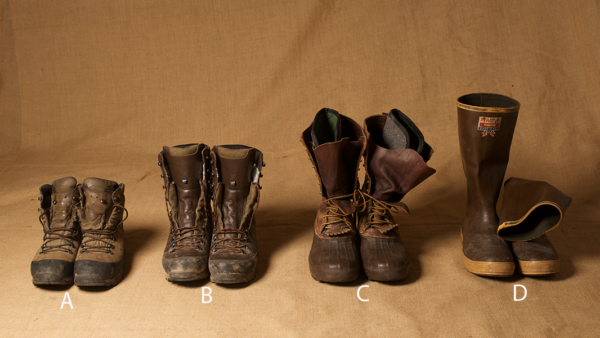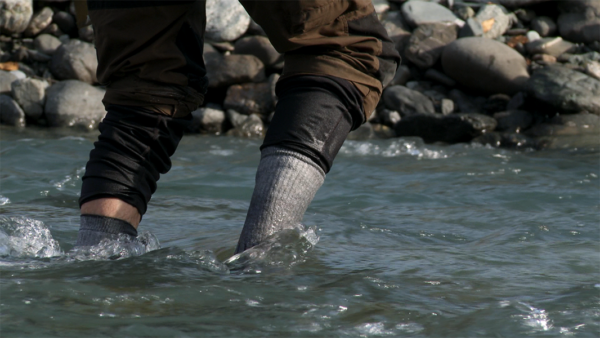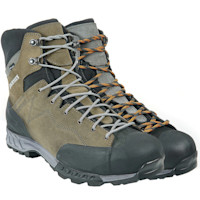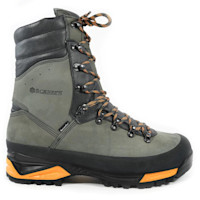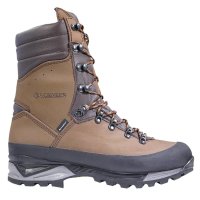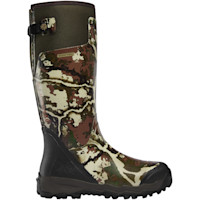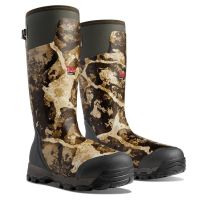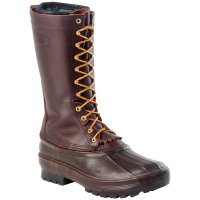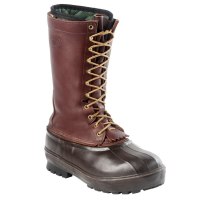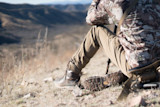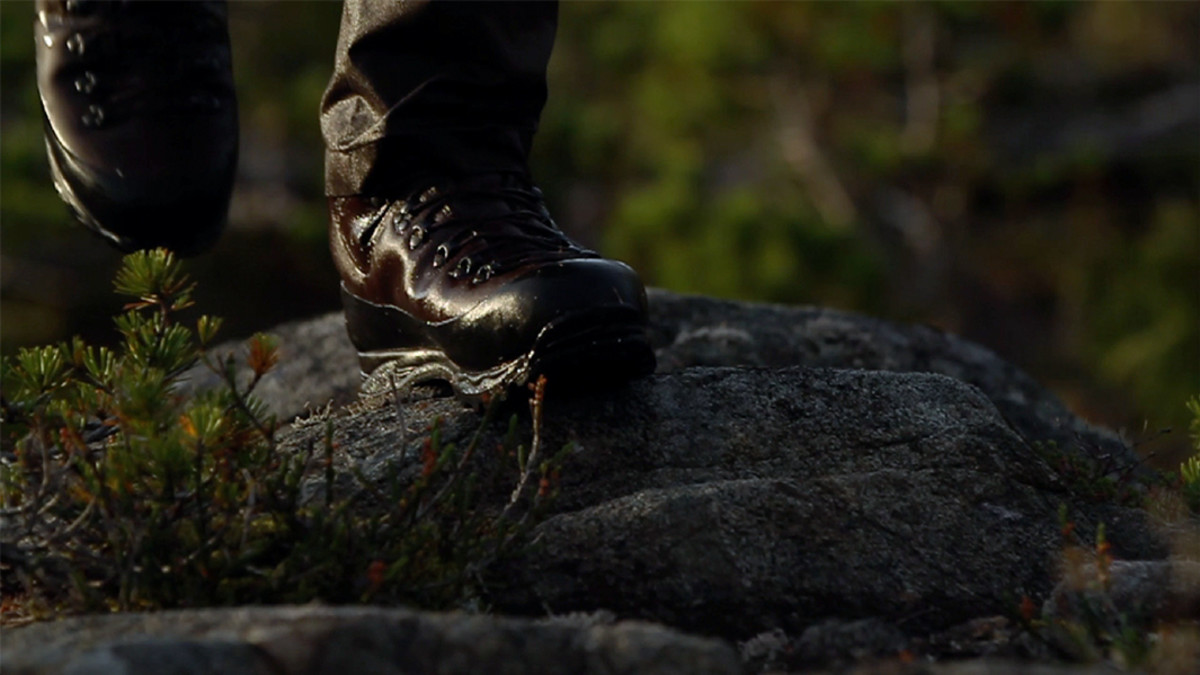
I’ve seen more hunts ruined by foot problems than any other cause, problems such as blisters, sore ligaments, open lesions from chronic dampness, even debilitating athlete’s foot.
Luckily, most of these issues are preventable with proper boot selection and diligent foot care. I hunt across the country and throughout the year in just four pieces of footwear. You might think of this as the four-Boot Rule.
The Mainstay
Medium-duty 6” all-leather, non-insulated hiking boots. Good for everything from Florida spring turkeys to New Mexico antelope to travel days between your home and hunting grounds. They should be made of thick leather, preferably around 2.5 mm, which protects your feet from thorns, sharp rocks, and cold mornings.
Best Backpacking/Elk Hunting Boots
For long hikes in rough country while carrying a heavy pack. At first glance, these should feel like overkill. Companies that produce footwear for serious mountain hunters, including Schnees and Meindl, produce boots weighing almost 5 pounds, equivalent to about 3 pairs of standard tennis shoes.
Manufacturers would certainly make these boots lighter if possible, but it takes a heavy package to incorporate all of the features necessary for serious backcountry hunts: thick leather uppers; heavily padded collars; heavy-duty midsoles; a breathable membrane such as Goretex or eVent; rubber sole guards; Vibram or Vibram-style outsoles; plus triple or double stitching.
Typically, boots of such quality are completely waterproof. It’s possible to wade or even stand in ankle-deep water for minutes at a time without getting your socks wet. What’s more, they give you the necessary stability to handle side hills and steep downhill grades without injuring yourself while carrying heavy loads.
*Ordered from most flexible to least flexible*
The Best Rubber Hunting Boots
Use these when you need to control odor and/or water. They are perfect for walking into treestands and other ambush setups, because you can scrub them with muddy water to rid them of unnatural odors such as gasoline or your own stench, odors that might otherwise give you away. They are also perfect for hunting in flat, wet country, like for chasing wild hogs on the Florida peninsula or stalking shoreline black bears in Southeast Alaska.
You should definitely think twice about wearing rubber boots in steep terrain. The lack of ankle support can put you in really a bad spot, and your feet can get horribly blistered. Some of the best rubber boots, such as those made by LaCrosse and Xtra-Tuff, have smooth fabric liners that allow them to come on and off easily when wet without letting them slip and slide against your feet. Avoid any kind of liner that’s fleecy or absorbent; you’ll never get them dry.
Pack Boots : Best Cold Weather Hunting Boots
A dirty secret about the rigid rubber outer soles used on most hiking boots is that they become almost hard like a nylon cutting board when temperatures get into the ‘teens and single digits. This isn’t really a problem on dry rock, as they can still get a grip, but as soon as you throw snow and ice into the mix you might as well be trying to climb a hill on ice skates. When you know for a fact that you’ll be dealing with low temperatures as well as snow and ice, switch to a pac boot with leather uppers and rubber bottoms, plus a more flexible style of outsole that’s armed with Air Bob Traction or a similar design.
The best designs fit almost as snugly and comfortably as boots designed for backpack hunters, but they’ll keep you far warmer. Make sure to get the kinds that use removable wool felt liners, and buy two sets of liners if possible. On extended hunts, you can rotate your liners on a daily basis: one pair left to dry over the wood stove or in your sleeping bag, one pair on your feet.
Waterproofing Boots
How do you properly waterproof leather hunting boots? Most importantly, start with clean, wet boots. You can remove dirt and grime with a stiff toothbrush, and you can wet the leather either naturally, by being out in wet conditions or by covering them in wet towels for an hour or so. Either way, you want the leather of the boots to be fully saturated.
Next use an old sock or rag to liberally apply your waterproofing agent into the leather. Nikwax Waterproofing Wax and Sno-Seal Jar Wax are both good products. Pay close attention to seams, stitching, and the areas around the eyelets. When you’re done let the boots dry for an hour, DO NOT place them near a direct heat source, before you buff out the remaining paste. Then let the boots sit overnight to fully dry before you wear them outside. When water no longer beads up on your boots, it’s time to repeat.
Chest Waders: Not Just for Duck Hunters Anymore
Chest waders fall outside of the four-boot rule, but then you know what they say: Rules are meant to be broken.
When you need to stay warm for an extra long period of time, consider donning a pair of the extreme-cold-weather chest waders used by late-season waterfowl hunters. These are made to keep you warm while standing waist deep in icy water as you get blasted by 40 mile per hour winds, and they’ll work equal wonders when you’re lying out on a frozen field during a late-winter goose hunt. They’re especially handy when your hunt requires you to lay down in the snow or frozen mud for hours on end, because you’ll stay dry even when you’re body heat starts to melt through.
Many ice fishermen have discovered this trick as well, and have abandoned insulated bibs and boots altogether in exchange for cold-weather waders. For them, there’s an additional benefit: if you fall through the ice in shallow water, you can just climb back up as dry as a bone and go about your business.
Wet Socks Grip Rocks
A great benefit of wool-blend socks is that they stick like glue to wet, algae-coated river cobbles. When you need to cross a creek or river, keep your boots dry by lashing them to your pack and then cross in your socks.
The rocks can be a little painful on your feet, but at least you’ll have a greatly reduced chance of falling into the water and soaking yourself. Once you’re safely across, wring out your socks before putting your boots back on. Or if you have an extra set of dry socks (you always should), then put them on and hang the wet socks on the outside of your pack to dry.

